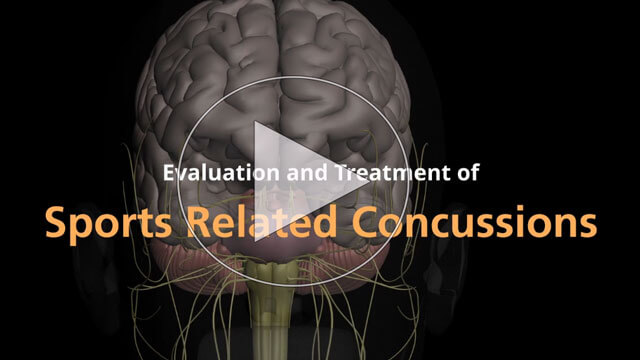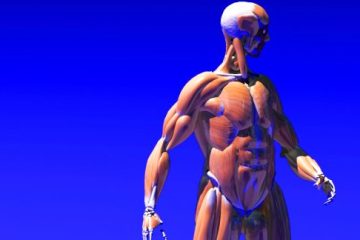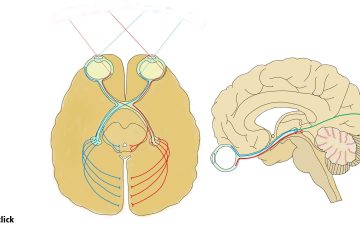Sports concussion physical therapy continuing education can enhance your ability to develop effective treatment programs and return athletes to the field. Join us in this three week video series on concussions.
The definition of a sports concussion
We are going to talk a bit about how we define a sports concussion within the scope of North American Seminars sports concussion physical therapy continuing education. I like to call this concussion 101 because there are a lot of myths out there. When I started my concussion practice in 2006, there was a “myth” that there had to be a hit to the head for a concussion to occur or be diagnosed. There had to be some documented hit to the head. We have found that the definition of concussion has evolved over the last ten years to include that it is a form of a mild traumatic brain injury.
Sports Concussion Physical Therapy Continuing Education – A pathophysiological process affecting the brain.
It is a pathophysiological process affecting the brain, induced by direct or indirect biomechanical forces. For example; If you are in a car accident or think there was a whiplash-associated injury and your body sustains a force, that head may never have impacted anything. There may never have been a hit to the windshield, or with an athlete, that head-to-head helmet collision, or head-to-earth, or ground, or turf collision. Sometimes it is just the sheer biomechanical forces that occur to the body that reverberate into the head.
Imagine you had a bowl of jello.
When I explain concussion to younger individuals and younger athletes, I like to say to imagine you had a bowl of jello. That bowl is the skull, and the brain is the jello. As you shake the bowl, what happens to the jello inside the bowl? It sloshes back and forth, and when that sloshing happens, there is a break in the brain’s connections that generally occur. It is that temporary loss of functional activity that then causes some of the signs and symptoms associated with concussion.
Common features of a concussion – video
Common features of a concussion include the following.
- There is usually a rapid onset of usually short-lived neurological impairment that typically resolves spontaneously.
- Some early signs and symptoms that you may encounter or you may visually see include: immediate headache, dizziness, fogginess, poor ocular motor control, loss of balance. All of us watch NFL football. All of us watch NBA basketball. Those who have watched a game where there is a suspected concussion see the athlete get up and might be stumbling or maybe looking drunk. All of those are potential signs and symptoms of a concussion that warrants further exploration or examination.
- There are also are acute clinical symptoms that reflect a functional disturbance rather than structural injury. Ninety-nine percent of the time with a mild traumatic brain injury or concussion, if you do a neuroimaging procedure like a CT or an MRI, it is going to be negative. Within the last seven years, a study showed that too many CT scans were being performed, erring on the side of children’s caution every time they would come into urgent care or an emergency room with a suspected head injury. They would CT their brains to ensure that there was not a bleed or something else going on. What happened as a result of that is the increase of child cancers went up. So what we have done through evidence-based practice and research and review is come up with an algorithm that would give you the information to say whether or not a CT was warranted.
Often, when I see parents of athletes that come in, the mom is like, “They never did a CT. They never got an MRI of my child’s brain. Is that definitive?”
I have to give that information of what I just talked about to say that most of the time, it is not warranted, and you’re going to expose that child or the athlete to undue radiation. We can clinically go through and look at signs and symptoms that would warrant a CT or an MRI. So not in all cases will there have been some type of neuroimaging. Currently, and this is where you have to know your research, there are no additional blood biomarkers, so you can not draw blood and say whether a patient has or has not sustained a concussion. However, in the research arena, we are trying to develop definitive processes. Still, to this day, a concussion is more of a clinical symptomology diagnosis rather than an actual definitive, there is a test that is going to say whether or not that athlete sustained a concussion.
Watch the trailer for our new Sports Concussion Physical Therapy Continuing Education course.

To learn more about concussions join the Healthclick subscription, for $189 meet all your continuing education requirements with high quality video courses. Sports Concussion is one of many courses presented within the subscription.
Evidence Based Research Articles Relating to Concussion
A Critical Analysis of the Role of the Neurotrophic Protein S100B in Acute Brain Injury


